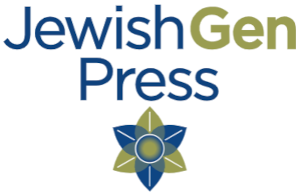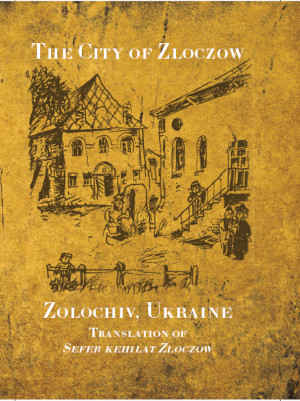

Translation of the
Published by the JewishGen Press
Editor of Original Yizkor Book: Baruch Karu (Krupnik)
Available from
for $38.00
Project Coordinator: Moshe Kutten
Cover Design: Rachel Kolokoff Hopper
Layout and Name Indexing: Jonathan Wind
Hebrew Translations: Moshe Kutten
Photo Extraction: Stefanie Holzman
8.5” x 11” hard cover, 426 pages with original photographs
 |
Details:
According to tradition, the oldest gravestones in the cemetery were from the 16th century. The first Jews resided in the city in the 15th century, before an organized community was in place. Zolochiv Jews received a “Letter of Rights” in 1654, which was renewed in 1681 by King Sobieski. Zolochiv suffered from many invasions by the Tatars, Turks, Austrians, and Russians in the 17th century, which also harmed the Jews significantly. However, over time they managed to recover and slowly rehabilitate themselves.
Zolochiv Jews occupied themselves with all the branches of trade, (mainly trade of agricultural products) crafts, brandy sale, and inn ownership. A limited number of Jews worked in support of the city's owners.
During the second half of the 18th century, the popularity of the Hasidic movement in Zolochiv grew. Rebbe Yekhiel Mikhel, a student of the BESHT served as Zolochiv Rabbi. There were several other prominent rabbis in the city over the years.
The Jewish Enlightenment Movement was late in arriving in Zolochiv, despite its proximity to the two Galitzian enlightenment centers. Zolochiv was the native town of Imber (poet of Hatikvah) and other prominent poets and authors. In 1894, Zionism activities began in Zolochiv. “HaShomer” “Tzeirei Zion”, “HaShomer HaTzair”, “Gordonia” and “HaMizrachi” branches were active in the city. Jewish and Hebrew school operated in the city beginning in 1920.
In 1921, Zolochiv had a Jewish population of approximately 5800 individuals (about 52% of the total population).
All this came to a bitter end when the Germans entered the city in July 1941. Beginning in the fall of 1941, Zolochiv Jews were sent to various forced labor camps in the area. About 5200 people were sent to the killing camp of Belzec in two Aktions. The ghetto was established on 1st December 1942. In February 1943, the ghetto was liquidated and 6000 people were taken to the nearby village of Yelykhovichi, where they were murdered.
The city of Zolochiv is no more. The fountains of life are dry. The spiritual and physical treasures are gone. The busing energy of the youngsters, blessed with talent and deeds, is silenced; cut down is the grandeur of the Zolochiv Jews. May this book serve as an eternal memory to the city and its people.
Alternate names for the town are: Zolochiv [Ukr.] Zlotsov, Zlotsev [Yid], Zolotchev [Rus.], Solotschiw [Ger.], Zloczow [Pol.] Nearby Jewish Communities:
Sasiv 5 miles NNE |
 JewishGen Press
JewishGen Press
 JewishGen Home Page
JewishGen Home Page
Copyright © 1999-2025 by JewishGen, Inc.
Updated 14 Dec 2022 by LA